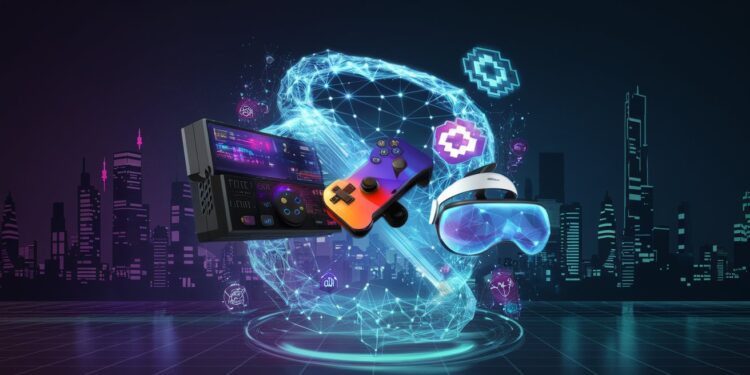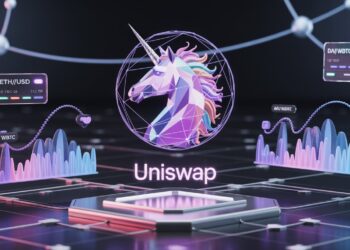Imagine a place where the only limit is your own imagination. A place you can connect with others, explore new worlds, and even own digital assets. This is the promise of the Metaverse, and it’s closer than you think.
The Metaverse is more than just hype. It’s a persistent, shared, and interactive digital space. Several vital technologies are making this future possible. Lets jump in and explore the key technologies making the metaverse a reality.
1. Blockchain: The Foundation of Trust and Ownership
Blockchain is the backbone of the Metaverse. It provides the security and trust needed for this new digital world. But what exactly is blockchain doing?
Decentralization and Security
Blockchain’s decentralized nature is a big deal. It means no single entity controls the Metaverse, enhancing security. Think of it as a digital ledger. Every transaction is recorded and verified across many computers. Smart contracts automate agreements, making things even more secure and transparent.
Digital Ownership (NFTs)
NFTs, or non-fungible tokens, show ownership of digital things. These tokens live on the blockchain. Imagine owning a piece of virtual land or a unique avatar. NFTs make it real. For instance, folks buy virtual land in Decentraland as NFTs. Also, they show off rare collectibles in their online spaces.
Cryptocurrencies and Metaverse Economies
Cryptocurrencies fuel the Metaverse economy. They allow you to buy, sell, and trade within virtual worlds. MANA in Decentraland and SAND in The Sandbox are examples. These crypto coins power in-world transactions.
2. Augmented Reality (AR) and Virtual Reality (VR): Immersive Experiences
AR and VR technologies are your doorway into immersive Metaverse experiences. They blur the lines between what’s real and what’s digital. How does that happen?
VR Headsets and Immersive Environments
VR headsets transport you to totally new places. They use displays and sensors to create realistic virtual spaces. Want to explore a fantasy world? A good VR headset will get you there.
AR Overlays and Real-World Integration
AR enhances your real surroundings with digital info. Think of it as a digital layer on top of what you see. Pokemon GO uses AR to add creatures to your view. Social media filters add fun effects to your face.
The Convergence of AR and VR
The future is a mix of AR and VR. Imagine wearing glasses. These glasses show you digital info and let you step into VR worlds. This blend could change how you work, play, and connect.
3. Artificial Intelligence (AI): Powering Intelligence and Interactivity
AI brings intelligence and interactivity to the Metaverse. It helps create realistic avatars and personalize experiences. How is AI doing this?
AI-Powered Avatars
AI can make avatars that look and act like real people. They respond to your voice. They can even show emotions. This makes interacting in the Metaverse feel a lot more natural.
Content Generation and World Building
AI can make Metaverse content. It helps design buildings, landscapes, and even stories. This speeds up the creation of virtual worlds. It also lowers the cost of building them.
AI-Driven Personalization
AI can tailor your Metaverse experience to what you like. It learns what you enjoy and suggests new things to try. This keeps you engaged and coming back for more.
4. 3D Modeling and Reconstruction: Building Virtual Worlds
3D modeling and reconstruction are vital for making immersive Metaverse worlds. They help create realistic places and things. But what’s the process?
3D Scanning and Environment Creation
Real-world locations can be scanned and remade in the Metaverse. Special cameras and sensors capture every detail. This means you could explore a virtual copy of your favorite city.
Game Engines and Development Platforms
Unity and Unreal Engine are key tools for Metaverse builders. These platforms offer tools for making 3D worlds. Creators can design games, experiences, and interactive environments.
The Evolution of 3D Graphics
3D graphics keep getting better. New ways of rendering make virtual worlds look more real. Lighting, textures, and details are more realistic. This makes the Metaverse more immersive than ever.
5. Internet of Things (IoT): Bridging the Physical and Digital
The Internet of Things (IoT) connects the real world to the Metaverse. It uses devices and sensors to share data. This data helps create immersive experiences. How does that work?
Sensor Data and Real-Time Integration
Sensors collect data about the real world. This data can change things in the Metaverse. For example, weather sensors could affect a virtual world’s climate.
Smart Environments and Metaverse Interactions
Smart devices can be controlled from inside the Metaverse. Imagine turning on your lights or locking your doors from a virtual world. IoT makes it possible.
6. Edge Computing: Decentralized Processing Power
Edge computing is important for fast Metaverse experiences. It moves processing closer to you. That reduces lag and improves how things run.
Reducing Latency and Improving Performance
Edge computing puts servers near users. This cuts down the time it takes for data to travel. Less lag means smoother VR and AR experiences.
Scalability and Decentralized Infrastructure
Edge computing helps the Metaverse grow. It spreads processing power across many locations. This stops any single point of failure. It also makes it easier to add more users.
7. Spatial Computing: Understanding the Physical Space
Spatial computing lets the Metaverse know about physical spaces. It maps and understands the world around you. This makes digital experiences more immersive. How does it work?
Mapping the Physical World
Spatial mapping turns your physical surroundings into a digital representation. Sensors and cameras create a 3D map of your space. This helps AR apps understand where things are.
Enabling Context-Aware Experiences
Spatial computing lets the Metaverse react to your surroundings. A game could change based on your room’s layout. Ads could appear based on what you’re looking at.
Conclusion: The Future of the Metaverse and its Underlying Technologies
The Metaverse is powered by many vital technologies. Blockchain, AR/VR, AI, and 3D modeling are all key. IoT, edge computing, and spatial computing also play big roles. These technologies are constantly changing.
Expect even more immersive and interactive experiences. The Metaverse has the potential to change how we live, work, and connect. As these technologies improve, the possibilities are endless. What impact will the Metaverse have on society? Only time will tell.

























